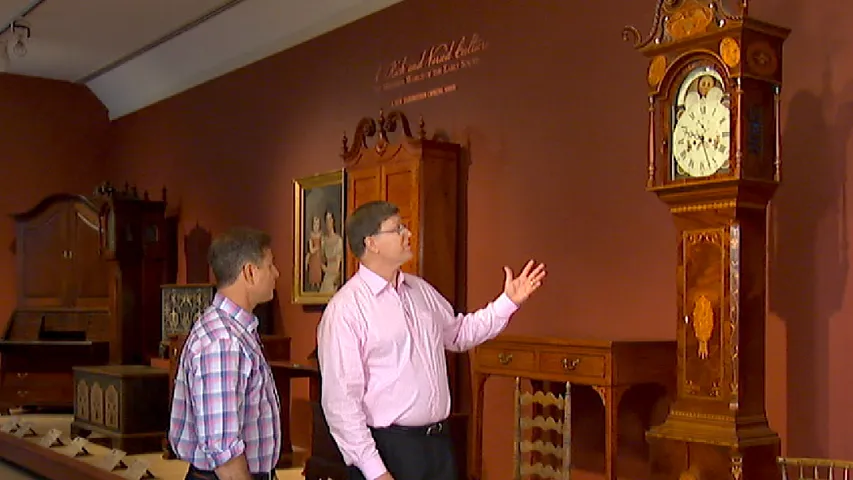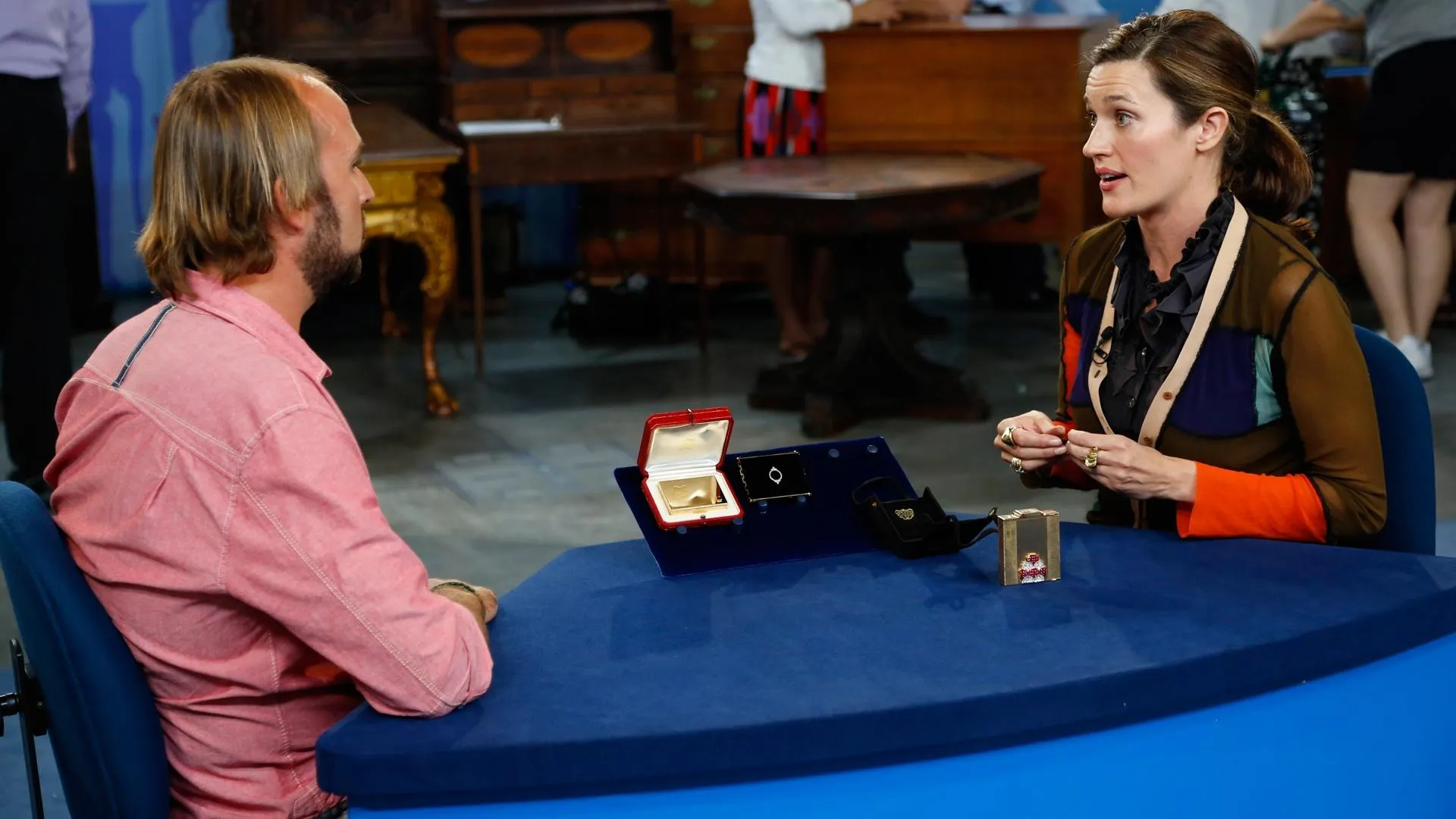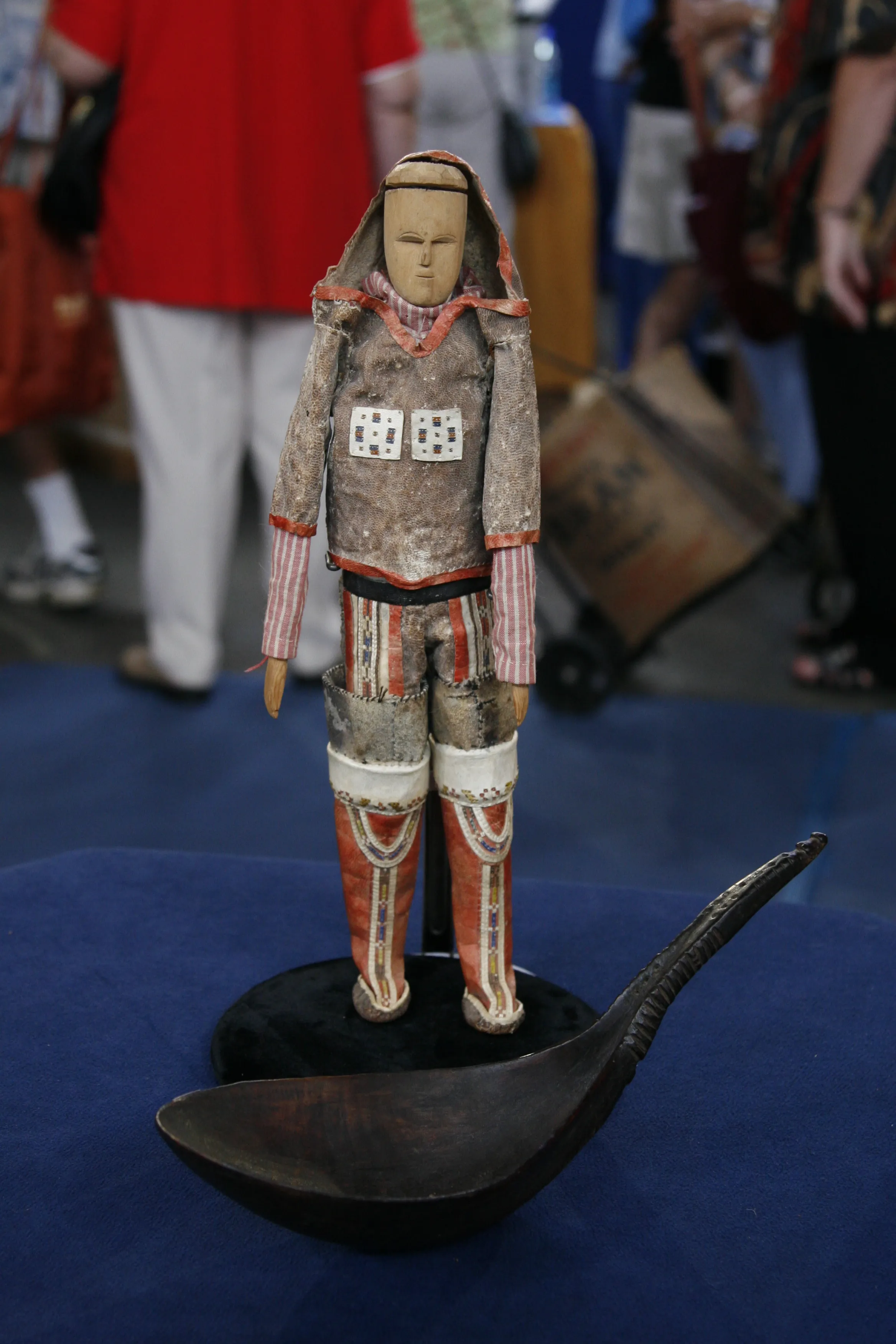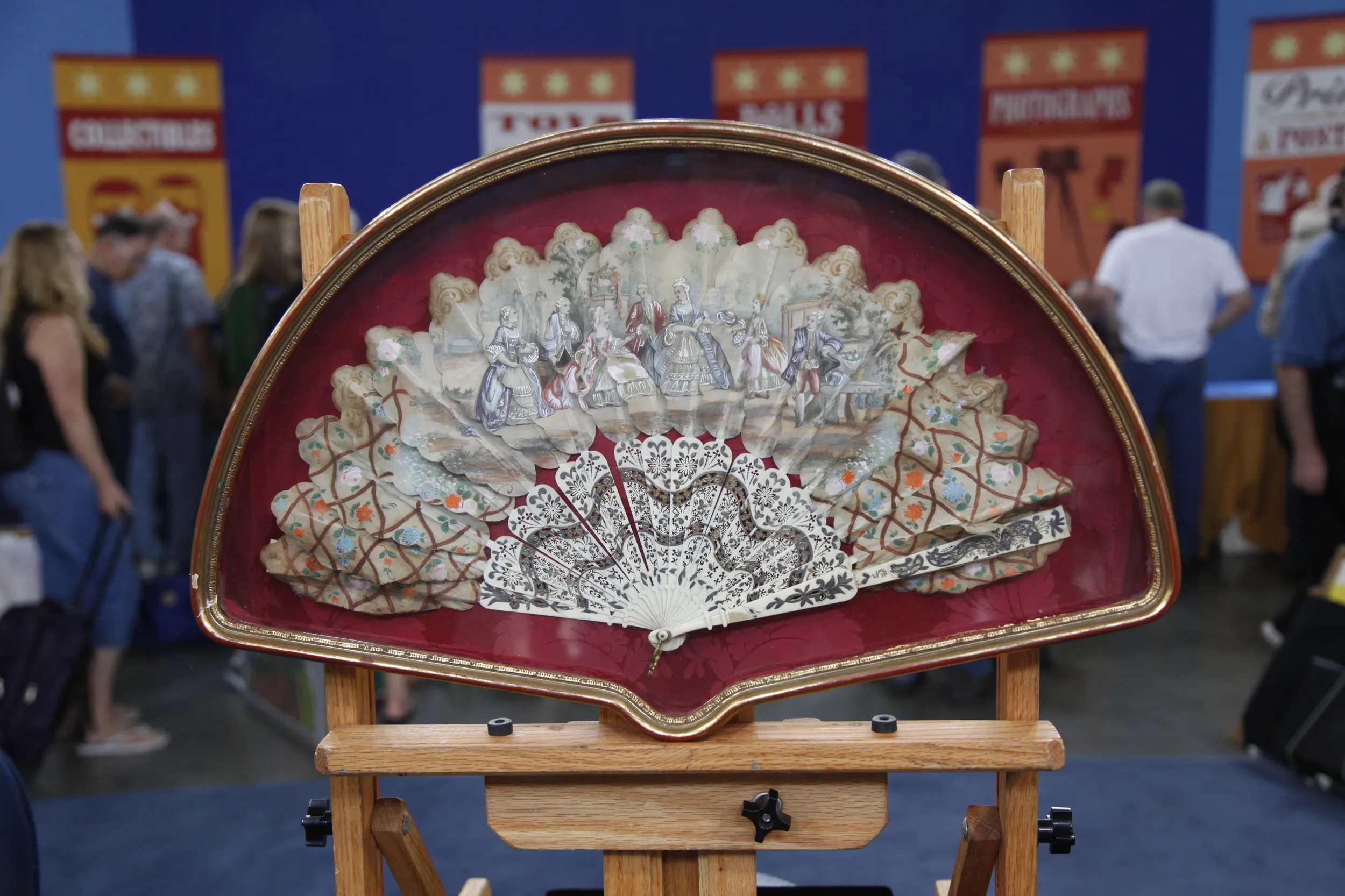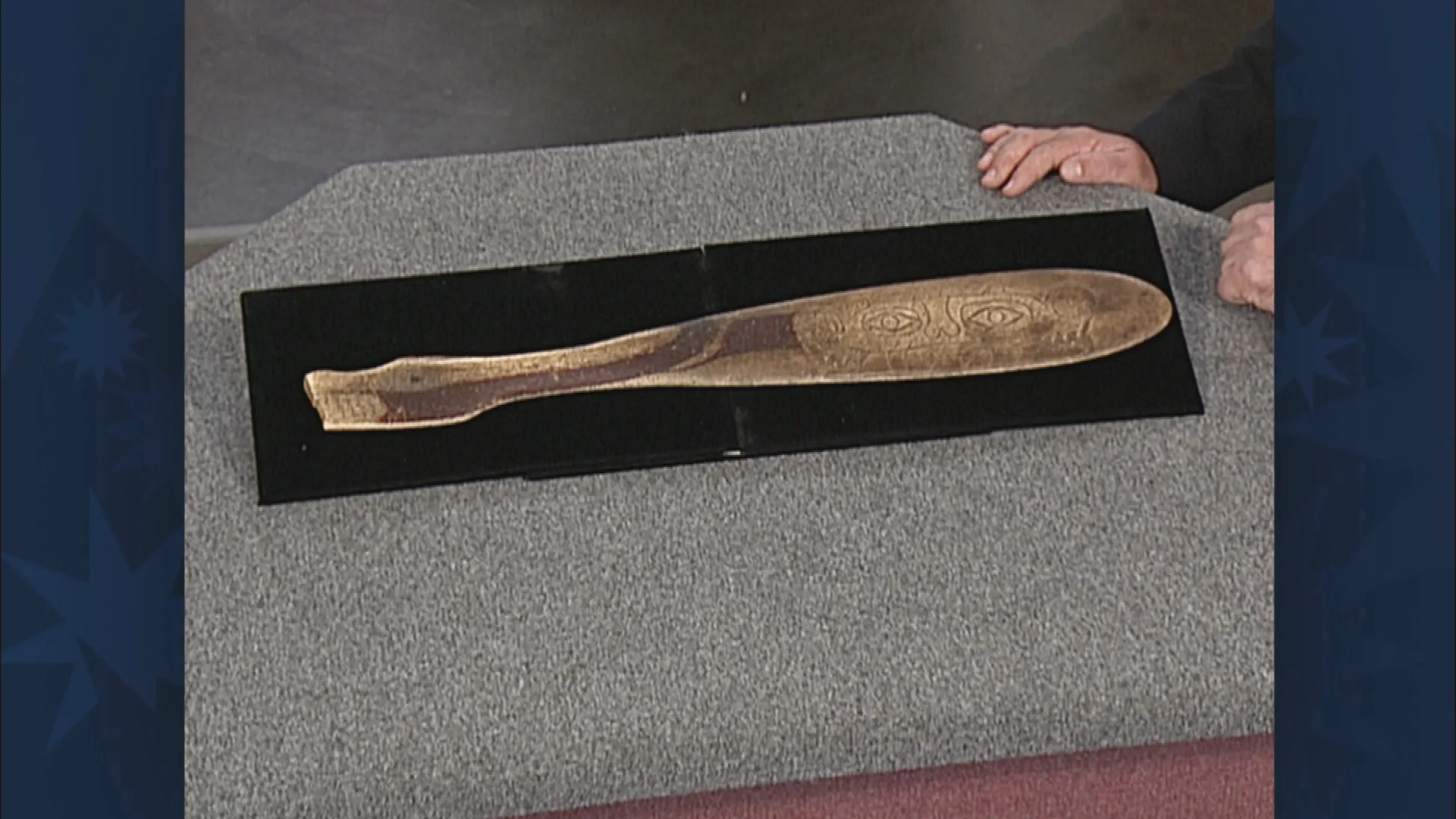HOST: The tall case clock, a well-known form today, was a 17th century time-keeping advancement. The addition of a long pendulum and heavy weights made it more reliable and accurate and created the need for a long cabinet. Colonial Williamsburg's DeWitt Wallace Decorative Arts Museum has an incredible collection of Southern tall case clocks. Appraiser Gary Sullivan was happy to point out the highlights of a tall case clock he calls, "one of the finest pieces of American federal cabinetmaking in existence."
HOST: Gary, this case clock is absolutely beautiful. And only one of an amazing collection here at the museum, but what made you choose this one to feature?
APPRAISER: Well, this is the most exuberant early American clock I've ever seen. The workmanship and the use of inlay is just extraordinary. It was made in Montgomery County, now Pulaski County, Virginia. And it was made about 1810. We don't know exactly who made it, but we believe that it was made by clockmaker David Whipple and cabinetmaker Peter Rife. The face was imported from England. It has this extraordinary spread-wing eagle on the pediment. It's a patriotic symbol, and that is very desirable to collectors today. In the center section we have this remarkable chain link inlay. And I've never seen one like that before. We see that the case actually flares out just below that inlay. And in the center of the door, we have this stylized conch shell inlay, and the base panel is truly remarkable. It is sculpted so the central inlay is raised from the background. And the sides and the top flare out. I have never seen a sculpted base panel like that before on a clock. It's primarily mahogany with several different types of woods being used in the inlay to provide those contrasting colors. We have some bone inlay here. There are actually some details made in silver and in brass as well.
HOST: Let's talk about on the inside, the brass works. That process was an arduous process as well.
APPRAISER: Right, a founder would have cast the brass pieces and the blanks for the wheels. And then the clockmaker would have had to have sawn and filed those pieces out by hand. He didn't have the use of any power machinery, so it was quite a process. In the early 19th century, they were just beginning commercial clock production. But this is not one of those. This was all made by hand, and was a very special piece when it was made.
HOST: And so the owner of this clock in 1810 would have paid about how much money?
APPRAISER: Well, a standard grandfather clock at that time was about $65 to $75. So this was at least $75, if not $100. Clocks like this were available only to the ultra-wealthy. Perhaps 10%-15% of the population had a clock of any kind at the turn of the 19th century.
HOST: What would a buyer today expect to pay?
APPRAISER: Well, there are four related clocks-- including this one-- that we believe were made by the same cabinetmaker. One sold in 2012 for $271,400. So collectors really like them. It's just a beautiful, beautiful piece of art.
HOST: Thanks for sharing it.
APPRAISER: Thanks for having me.

